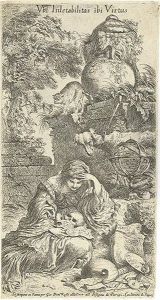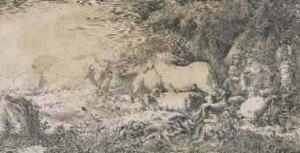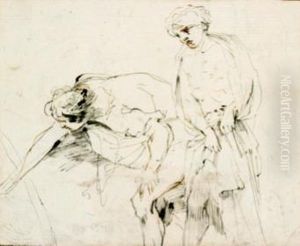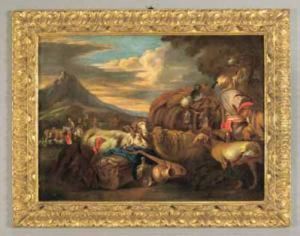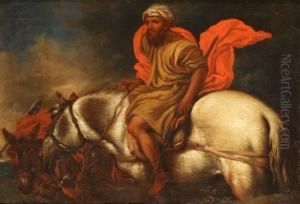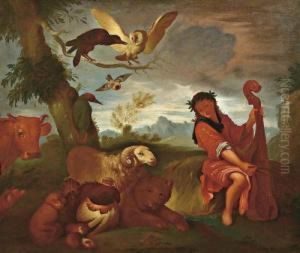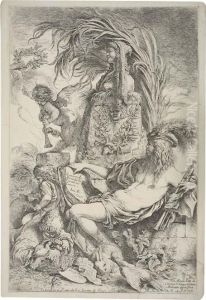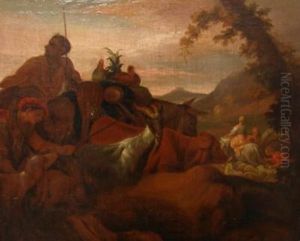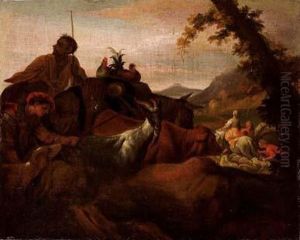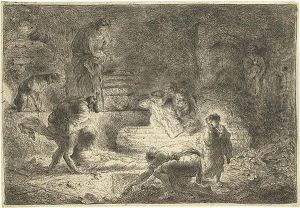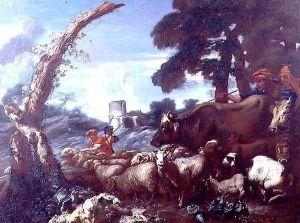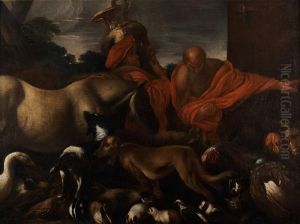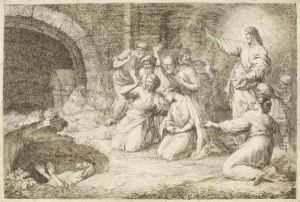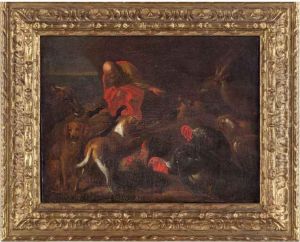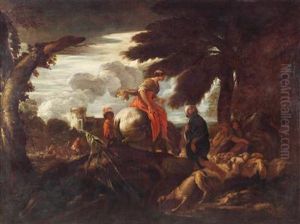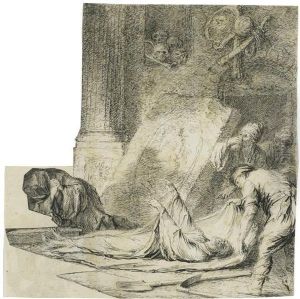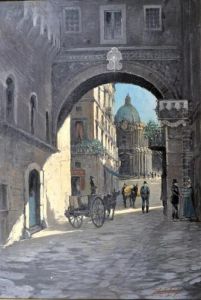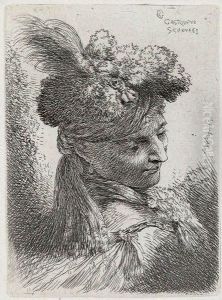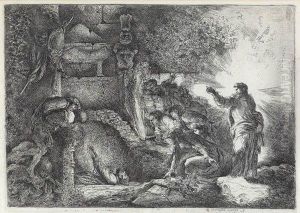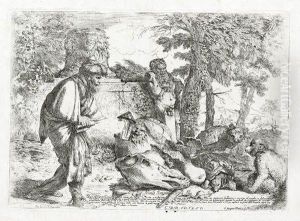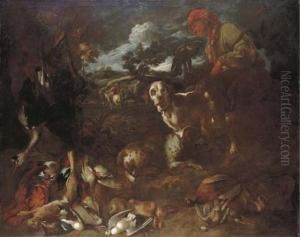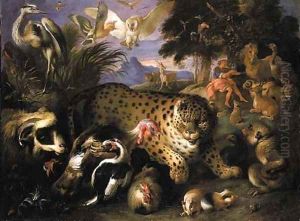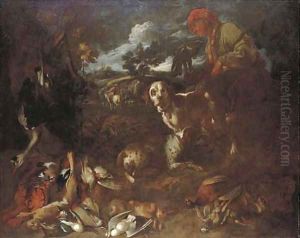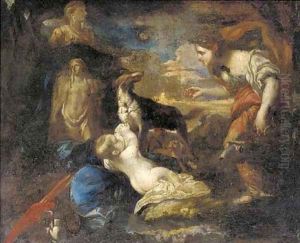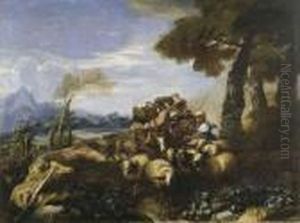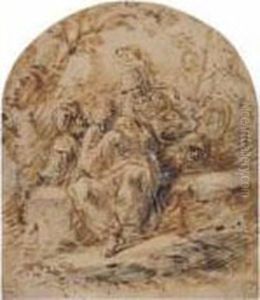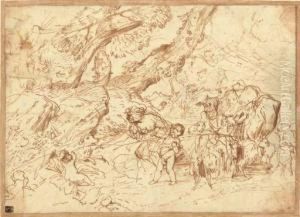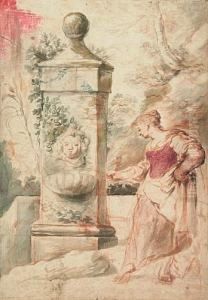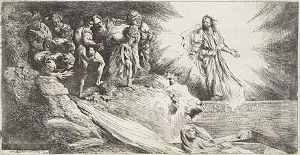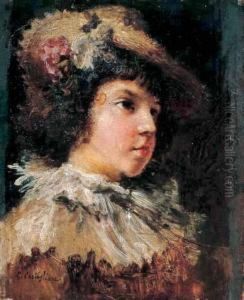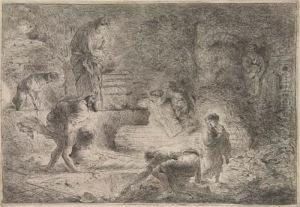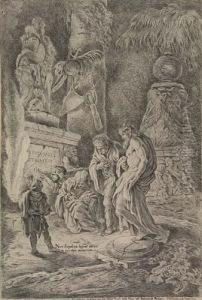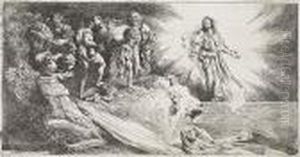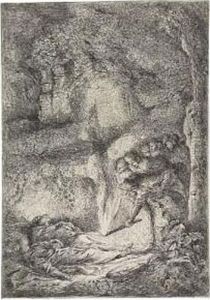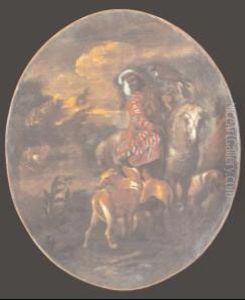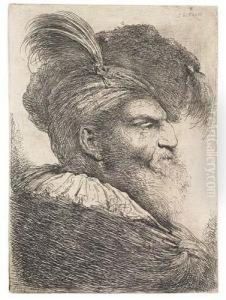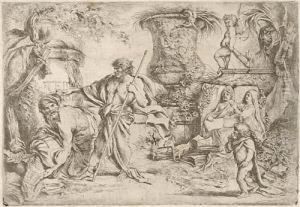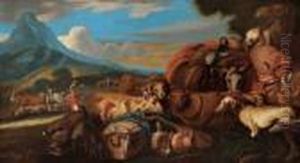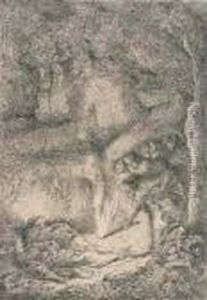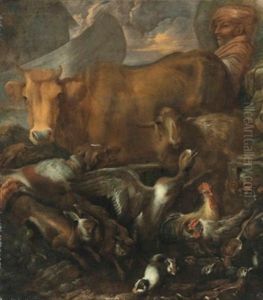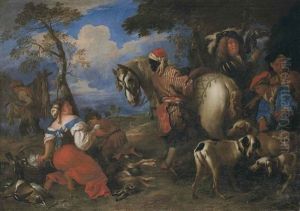Giovanni Francesco Castiglione Paintings
Giovanni Francesco Castiglione, also known as il Grechetto or il Grechetto Castiglione, was an Italian Baroque painter, draughtsman, and printmaker. Born in Genoa in 1641, Castiglione was part of an artistic family; his brother Salvatore and his son Felice were also painters. He was initially trained by his father, Giovanni Battista Castiglione, before studying under the prominent Genoese artist Giovanni Benedetto Castiglione, who was likely his uncle. Despite the similar names, he should not be confused with the more famous Giovanni Benedetto.
Castiglione's work was influenced by the Genoese school's rich tradition as well as the broader European Baroque movement. His style was characterized by a dynamic use of light and shadow, a loose brushwork, and a strong sense of movement—features that aligned him with the Baroque aesthetic. He was particularly known for his pastoral and genre scenes, which often featured vibrant, rustic landscapes filled with animals and figures, reflecting an interest in naturalism.
Throughout his career, Giovanni Francesco Castiglione worked in various cities in Italy, including Milan and Mantua, but he spent significant periods in his native Genoa. His work did not achieve the same level of fame as his contemporaries, and for a long time, he was overshadowed by the more prominent members of the Castiglione family. However, his contributions to Italian Baroque art have been recognized in more recent times.
Castiglione's paintings and etchings show a personal interpretation of the Baroque style, with a particular focus on landscape and genre painting that was somewhat unique for his time in Genoa. His art often conveyed a sense of immediacy and spontaneity, perhaps reflecting the influence of the naturalist trends that were becoming more popular in Europe at the time.
The artist died in 1716, leaving behind a body of work that continues to be of interest to art historians and collectors. While his oeuvre may not be as extensive or as well-known as that of other Baroque masters, Giovanni Francesco Castiglione's work provides a valuable insight into the variation and scope of Italian Baroque painting.
